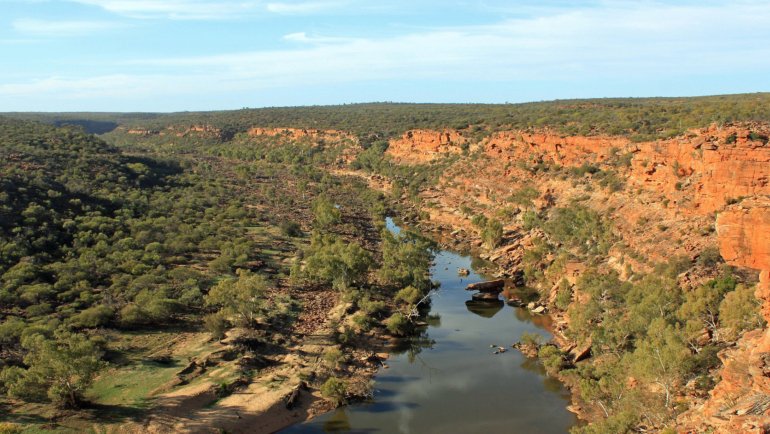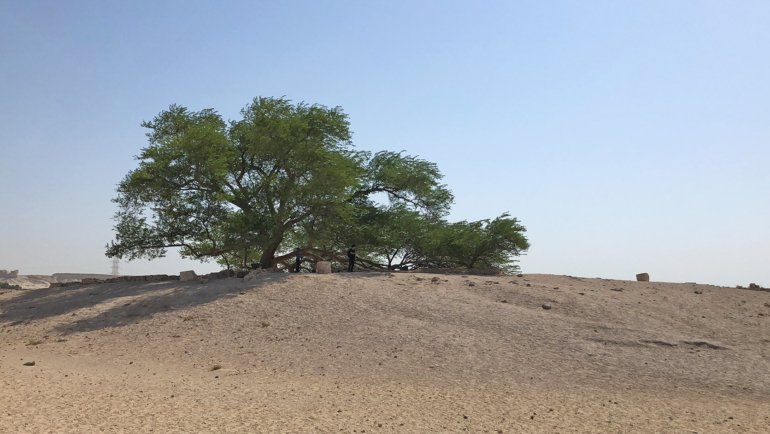Azerbaijan is a country situated in both Eastern Europe and West Asia, bordered by Armenia to the west, Iran to the south, Russia and Georgia to the north, and the Caspian Sea to the east. The country’s capital and largest city is Baku and the primary language spoken is Azeri.
One of the notable features of Azerbaijan is its rich biodiversity, which includes diverse natural habitats such as lowlands, lakes, mountains, deserts, wetlands, coastlines, and rivers. This diverse range of habitats provides homes for various types of flora and fauna. Among the wildlife found in Azerbaijan’s habitats are bears, gazelles, wild cats, and deer.
In this article, we provide more information about 11 wild animals that can be found in Azerbaijan.
1. Persian Leopard

- Scientific name: Panthera pardus tulliana
- Type of animal: Mammal
- Where found in the country: Talysh Mountains and Shahdag National Park.
- Conservation status: Vulnerable
The Persian leopard is a subspecies of leopard that is primarily found in the Caucasian region of Asia. These majestic feline species can be found in mountainous and forested areas of Azerbaijan, where they roam in solitude.
They are known for their striking appearance, featuring a golden coat patterned with black spots.
Persian leopards communicate with other leopards through a rasping cough, which serves as a warning signal to other predators or competitors. Due to their elusive nature, they are not commonly seen in the wild, and much of their behavior and habits remain a mystery to researchers.
★ Did you know? Persian leopards are known to be primarily nocturnal, meaning they are most active at night.
2. Caspian Seal
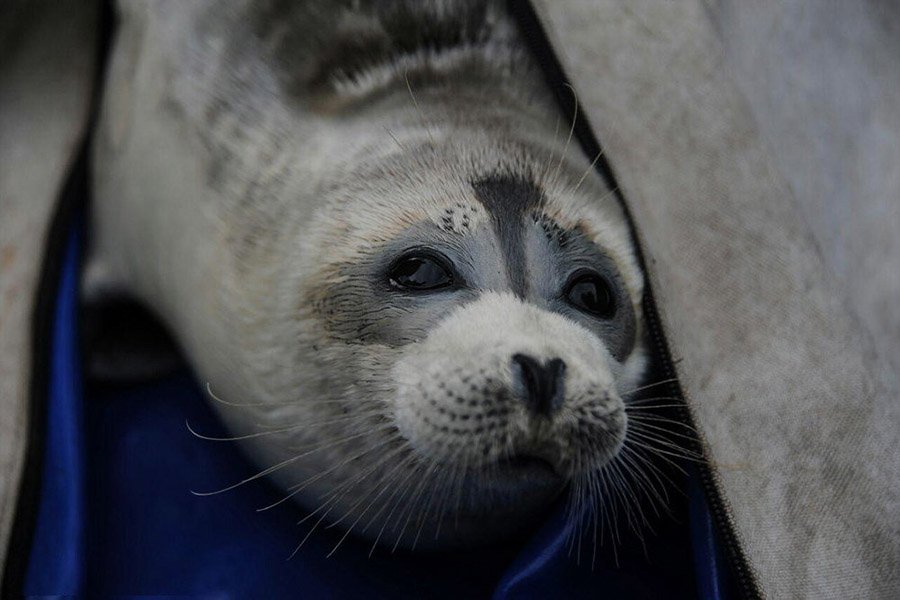
- Scientific name: Pusa caspica
- Type of animal: Mammal
- Where found in the country: Coastal areas and shallow waters of the Caspian Sea.
- Conservation status: Endangered
The Caspian seal, also known as the Persian seal, is a unique and fascinating earless seal species that is found exclusively in the Caspian Sea, making it an endemic species to the region. These remarkable marine mammals are typically found in shallow water areas like shorelines, reefs, and sandy islands.
Caspian seals have a distinctive whitish coat with dark spots, rounded heads, and large eyes that give them a cute and endearing appearance. They are social animals that form small groups, especially during the winter breeding season. These seals are well adapted to living in the harsh, frigid conditions of the Caspian Sea, where they depend on the sea’s bounty to survive.
★ Did you know? Caspian seals are known to dive up to 75 meters deep, making them one of the deepest-diving seal species in the world.
3. European Roe Deer
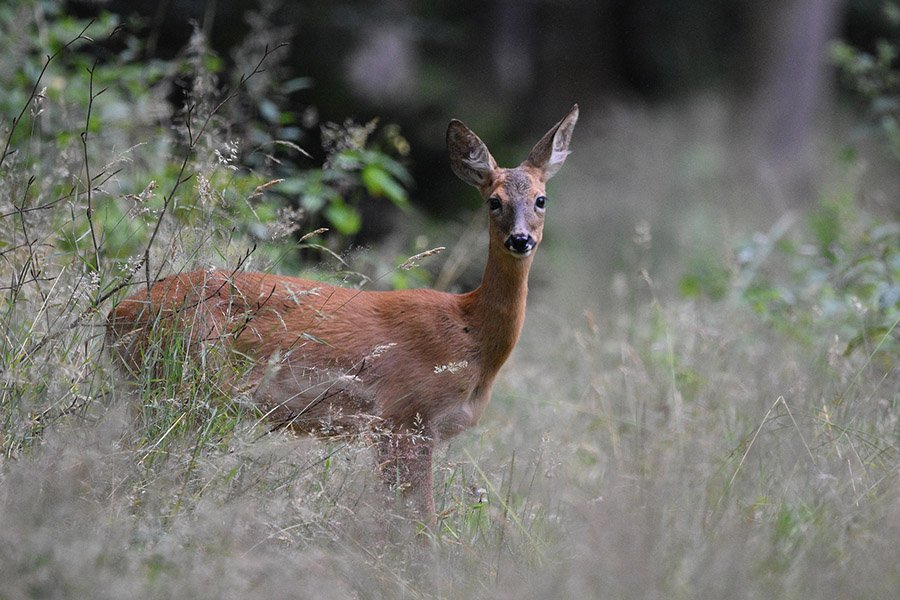
- Scientific name: Capreolus capreolus
- Type of animal: Mammal
- Where found in the country: Shahdag National Park, Hirkan National Park, Talysh Mountains, and within the forests and foothills of the Caucasus Mountains.
- Conservation status: Least Concern
The European roe deer, also known simply as Roe deer, is a fascinating and beautiful species of deer that can be found in Azerbaijan. These small deer are characterized by their distinctive pale rump and short antlers, which are typically shed and regrown annually.
Roe deer are known for their elusive behavior and are often difficult to spot in the wild. They typically spend most of their daytime hiding in dense vegetation or resting in sheltered areas.
They are primarily crepuscular animals, meaning they are most active during the hours of dusk and dawn. During this time, they venture out to forage for food or to socialize with other members of their species.
★ Did you know? The European roe deer has the ability to delay the implementation of a fertilized egg, a process known as “embryonic diapause.” This means that after mating in the fall, the mother’s body will suspend the development of the fertilized egg until environmental conditions are more favorable in the spring.
4. European Red Deer
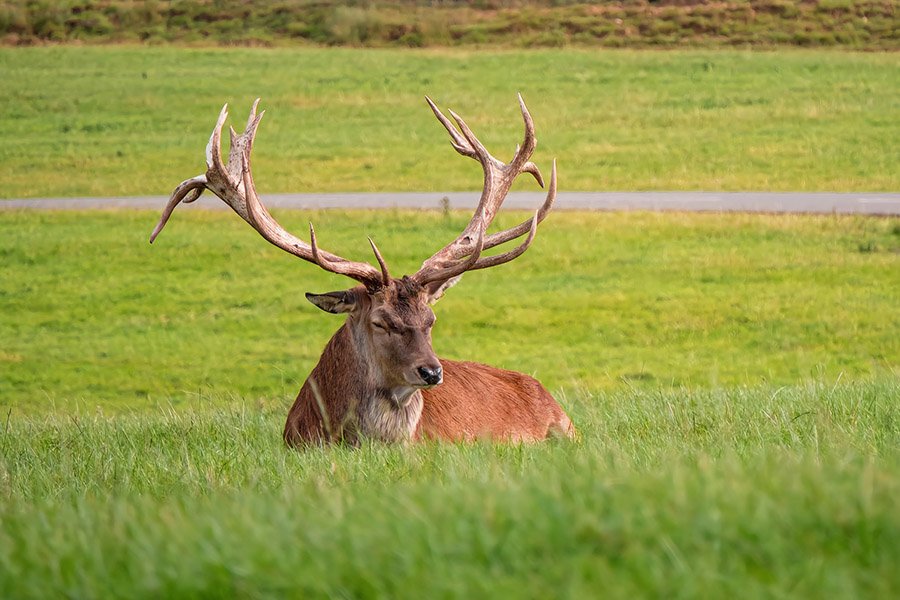
- Scientific name: Cervus elaphus
- Type of animal: Mammal
- Where found in the country: Quba and Lankaran mountainous regions.
- Conservation status: Least Concern
The European red deer is a majestic and large species of deer native to much of Europe and parts of western Asia and North Africa. They inhabit various environments, including meadows, forests, and grasslands. In Azerbaijan, the closest subspecies is the Caucasian red deer (Cervus canadensis maral), which is native to the Caucasus Mountains and has a slightly smaller body size than the European red deer.
European red deer primarily feed on a diet of fruits, leaves, and grasses as herbivorous animals. During the winter months, when food is scarce, they may also browse woody plants and shrubs. They are known for their ability to adapt their diet to changing environmental conditions and food availability.
★ Did you know? Only male European red deer, also known as stags, have antlers. The antlers are typically shed annually, usually at the end of the breeding season or in early winter, and then regrow in the spring.
5. Goitered Gazelle
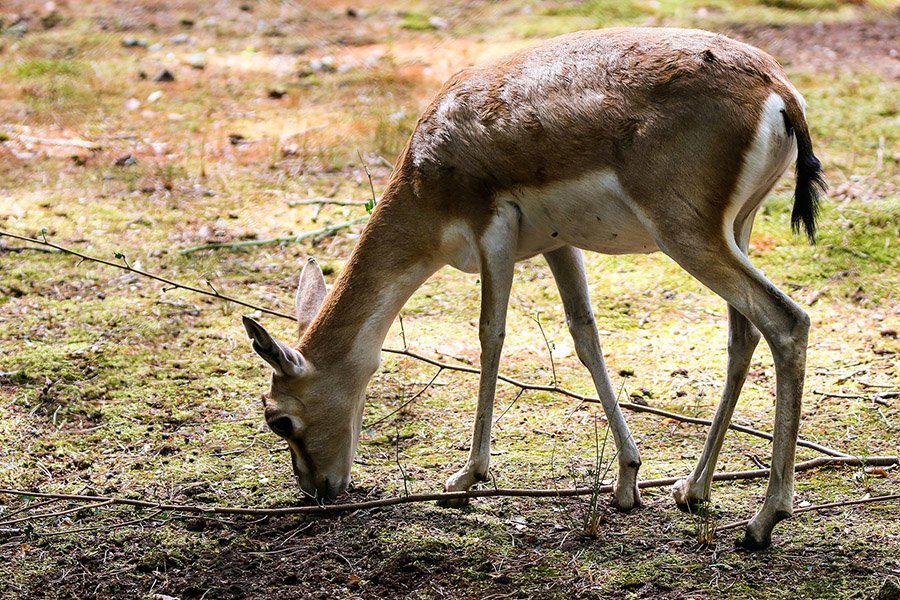
- Scientific name: Gazella subgutturosa
- Type of animal: Mammal
- Where found in the country: Semi-arid regions of the country, particularly in the Shirvan and Ganja regions.
- Conservation status: Vulnerable
The goitered gazelle, also known as the Persian gazelle, is an impressive and adaptable antelope species found in various parts of Asia, including Azerbaijan. These graceful animals are well-suited to life in arid and semi-arid habitats, including rocky areas, deserts, grasslands, and semi-deserts.
Goitered gazelles are social animals and are often found living in large groups, referred to as herds, consisting of females and their young, as well as young males. During the mating season, typically in the spring, males compete fiercely for access to females. The males use impressive displays of dominance, including standing on their hind legs and locking horns, to establish dominance and secure mating opportunities.
★ Did you know? The goitered gazelle derives its name from the goiter-like enlargement of the male’s throat, which is prominent during the mating season.
6. Caucasian Squirrel
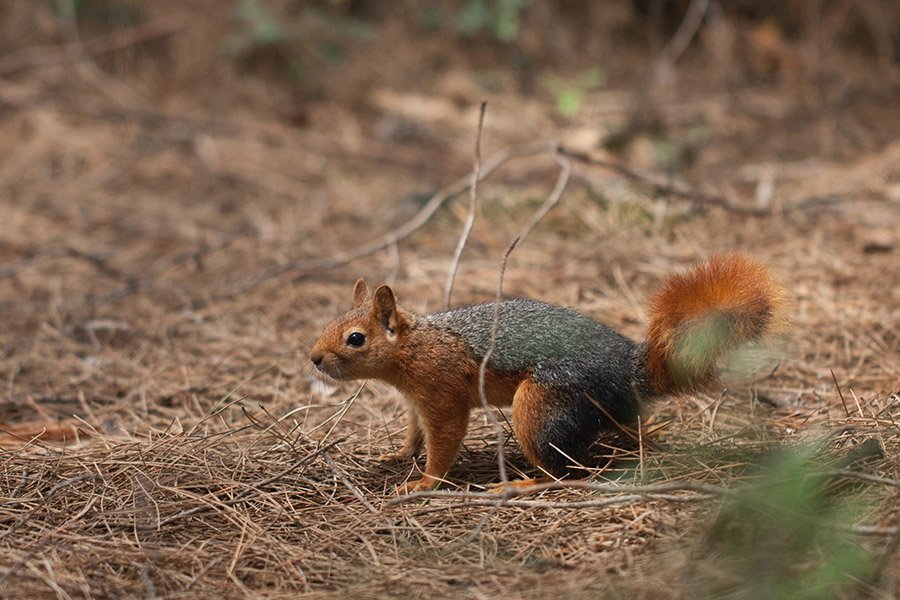
- Scientific name: Sciurus anomalus
- Type of animal: Mammal
- Where found in the country: Forested regions in Azerbaijan.
- Conservation status: Least Concern
The Caucasian squirrel, also known as the Persian squirrel, is a fascinating small tree squirrel species found in the forests of Azerbaijan and other regions of Asia. Covered with reddish-brown fur on their upper body and a whitish underside, these agile creatures have a distinctive bushy tail that can grow up to 20cm (7.9 inches) in length. These squirrels have a common habitat in forested regions and can be seen living on top of trees, inside holes, or cavities.
Caucasian squirrels are mostly solitary animals, although sometimes they can be spotted in groups where food is plenty. They are omnivores, and their diet mainly consists of insects, fruits, seeds, and nuts. These squirrels are very adaptable and have been known to thrive in urban environments, using parks and gardens to find food and shelter.
★ Did you know? When communicating with other squirrels, the Caucasian squirrels emit short, sharp quacking sounds that vary in pitch and tone depending on the context of the communication. These noises can be used to alert other squirrels of potential threats, indicate the presence of food or water, or signal the location of a mate.
7. Asiatic Wildcat
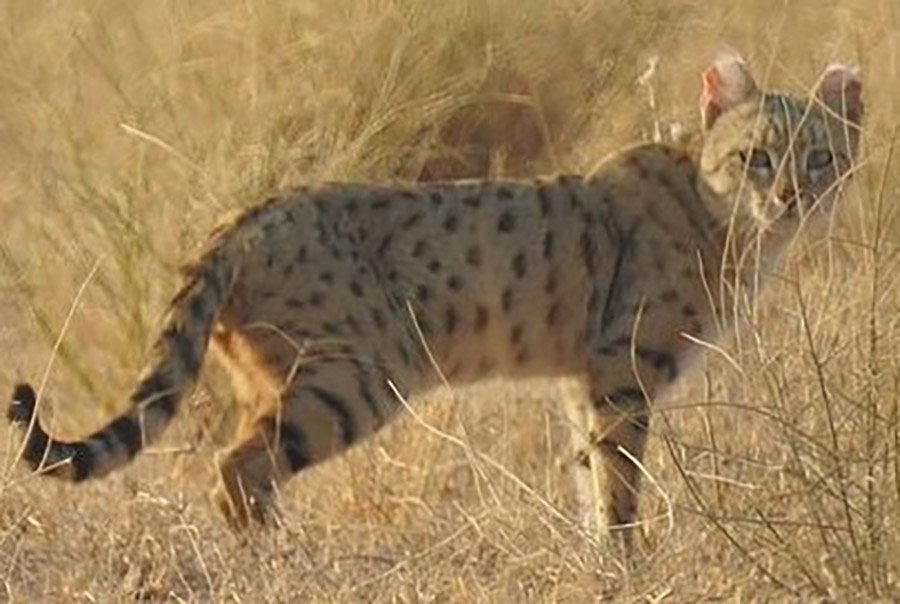
- Scientific name: Felis lybica ornata
- Type of animal: Mammal
- Where found in the country: Caucasus Mountain range.
- Conservation status: Least Concern
The Asiatic wildcat, also known as the Steppe wildcat, is a fascinating subspecies of wild cat that resembles a domestic cat but with longer legs and tail. These wildcats can inhabit a wide range of habitats, including grasslands, forests, mountainous regions, and shrublands throughout their native range. They are skilled predators, and their diet mainly consists of birds, small mammals, reptiles, and insects.
Adult Asiatic wildcats typically weigh around 4kg, with males usually being larger than females. They are highly active at night, using their keen senses and impressive hunting skills to stalk and pounce on their prey. They are solitary animals, with the exception of mothers and their kittens.
★ Did you know? Asiatic wildcat communicates with other cats using a variety of vocalizations, including a distinct and high-pitched meow. This vocalization can be used to attract a mate, signal territorial boundaries, or warn of potential threats.
8. Stone Marten
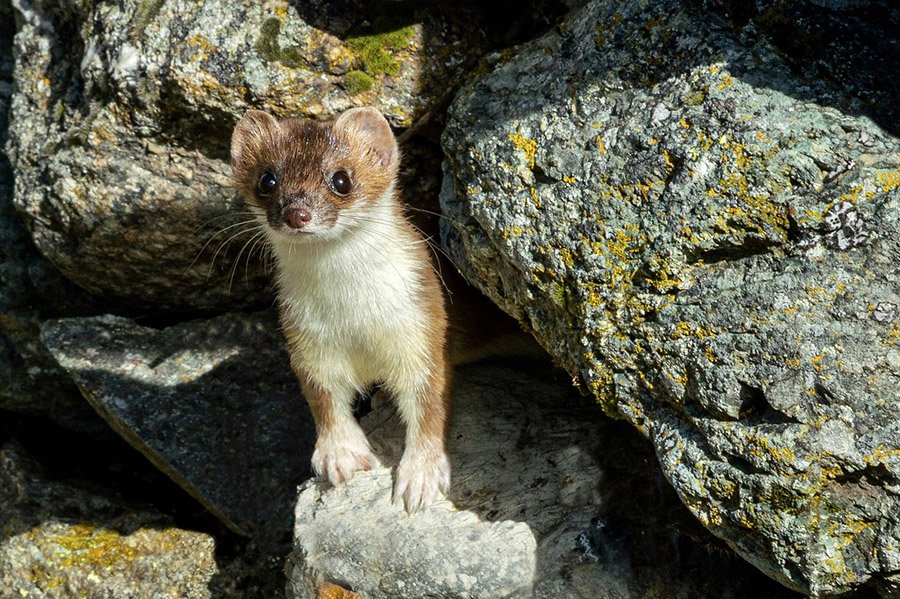
- Scientific name: Martes foina
- Type of animal: Mammal
- Where found in the country: Shirvan and Hirkan National Park.
- Conservation status: Least Concern
The stone marten, also known as the beech marten, is a fascinating and cunning member of the weasel family native to Europe and Central Asia. They are adaptable to a range of habitats, including rocky areas, shrublands, and forests. Stone martens are omnivores and have a varied diet that includes insects, berries, small animals, fruits, reptiles, and birds.
Stone martens are relatively small, weighing between one to two kilograms on average. Males are usually larger in size than females.
These creatures are known for their excellent climbing abilities and are skilled at escaping predators by climbing trees or swimming. They are solitary and elusive animals, except for mothers with their young mating pairs.
★ Did you know? Stone martens have a unique adaptation to their feet with semi-retractable claws, which allows them to climb trees and walk on slippery surfaces with ease.
9. Gray Wolf
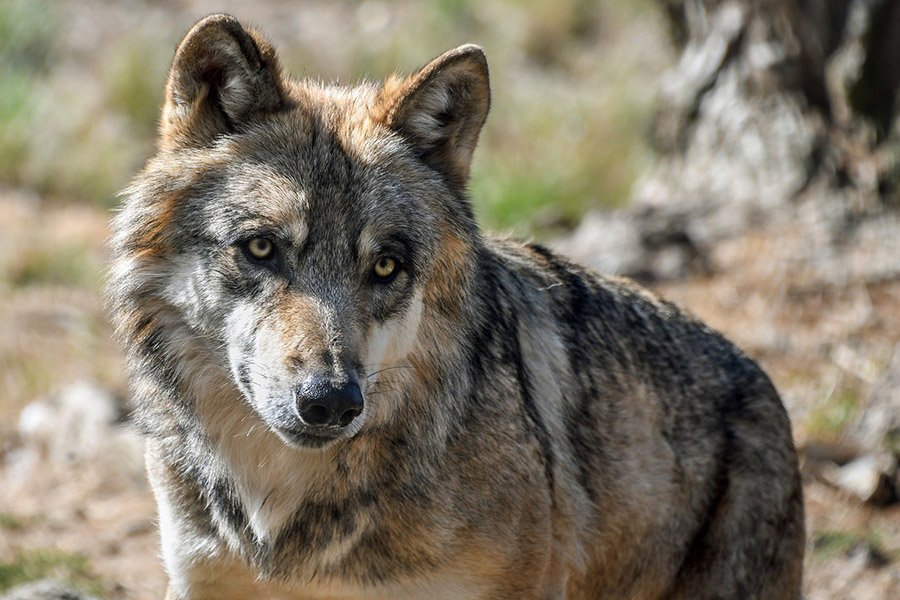
- Scientific name: Canis lupus
- Type of animal: Mammal
- Where found in the country: Forests, mountainous areas, and grasslands in Azerbaijan.
- Conservation status: Least Concern
The Gray wolf, also known as the timber wolf, is a majestic and powerful canid species that inhabit a wide range of habitats such as tundra, forests, grasslands, and mountains across North America, Europe, and Asia.
These animals are carnivorous and have a diverse diet which includes various species of mammals such as hares, rodents, deer, and wild boar. They are a highly adaptable species that can survive in harsh and remote environments.
Gray wolves are one of the largest members of the canine family with males weighing around 40kg (88 lbs) and females around 35kg (77 lbs), though some individuals can weigh up to 60kg. They have a distinctive gray or brownish-gray fur with a bushy tail and pointed ears.
★ Did you know? Both wolves and dogs belong to the same species, Canis lupus, and are closely related. Domestic dogs were likely domesticated from wolves thousands of years ago and have since evolved into their own distinct subspecies, Canis lupus familiaris.
10. Brown Bear

- Scientific name: Ursus arctos
- Type of animal: Mammal
- Where found in the country: Forested regions of Azerbaijan, including the Greater Caucasus Mountains and the Zangezur Mountains.
- Conservation status: Least Concern
The brown bear is one of the largest and most iconic bear species found across the world. These creatures are classified as omnivores and their diet consists of a wide variety of food such as insects, fish, plants, small mammals, and fruits. The males and females have distinct physical differences, with males typically weighing around 200kg (440 lbs), while females weigh around 150kg (330 lbs). However, some individuals have been known to weigh up to 300kg (661 lbs).
Brown bears are mainly active during the night when they use their impressive hunting skills to forage for food. They are known to be territorial animals and will fiercely defend their territory from intruders. Interestingly, they have an acute sense of smell and can detect food from a considerable distance.
★ Did you know? The brown bear has an impressive lifespan of up to 30 years in the wild, but their life expectancy can be significantly reduced by factors such as hunting and habitat loss.
11. Eurasian Badger
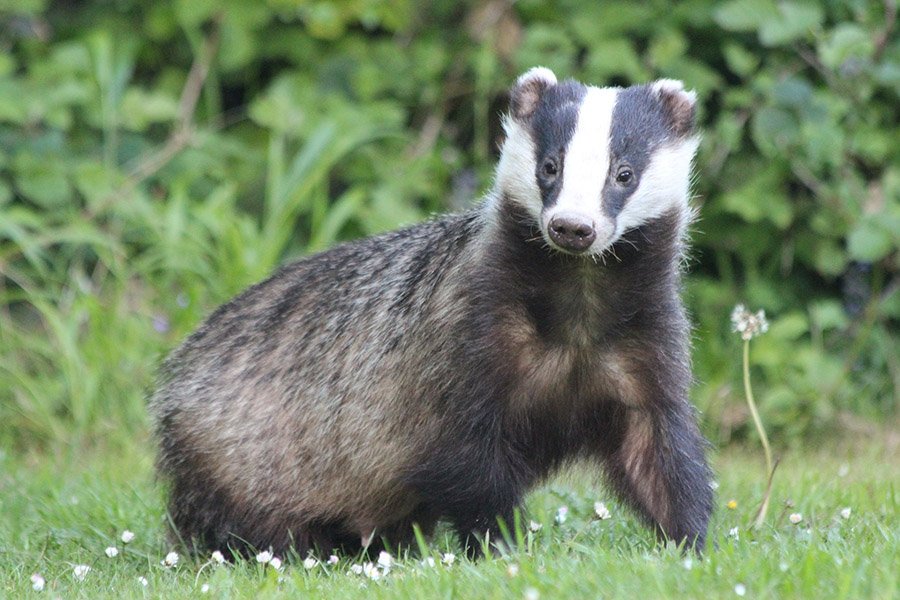
- Scientific name: Meles meles
- Type of animal: Mammal
- Where found in the country: Forested areas, grasslands, and sometimes even in urban environments. They are often found in the Caucasus Mountains and the Caspian Sea coast.
- Conservation status: Least Concern
The Eurasian badger, also known as the European badger, is a medium-sized mammal with a distinctive grey flattened body, a pointed snout, and sharp claws that allow it to dig extensive underground burrows. Badgers are omnivorous and have a diverse diet, which includes fruits, nuts, birds, small mammals, insects, and reptiles.
The average weight of a badger ranges from 10 kgs (22 lbs) to 15 kgs (33 lbs), but males are generally larger than females in physical appearance. They are primarily nocturnal and spend most of their time in their underground burrows, which can have several entrances and extensive tunnel systems. These burrows provide shelter and protection from predators, such as wolves and foxes.
★ Did you know? Eurasian badgers are known for their strong sense of smell, which they use for several purposes, such as locating food and communicating with each other.


